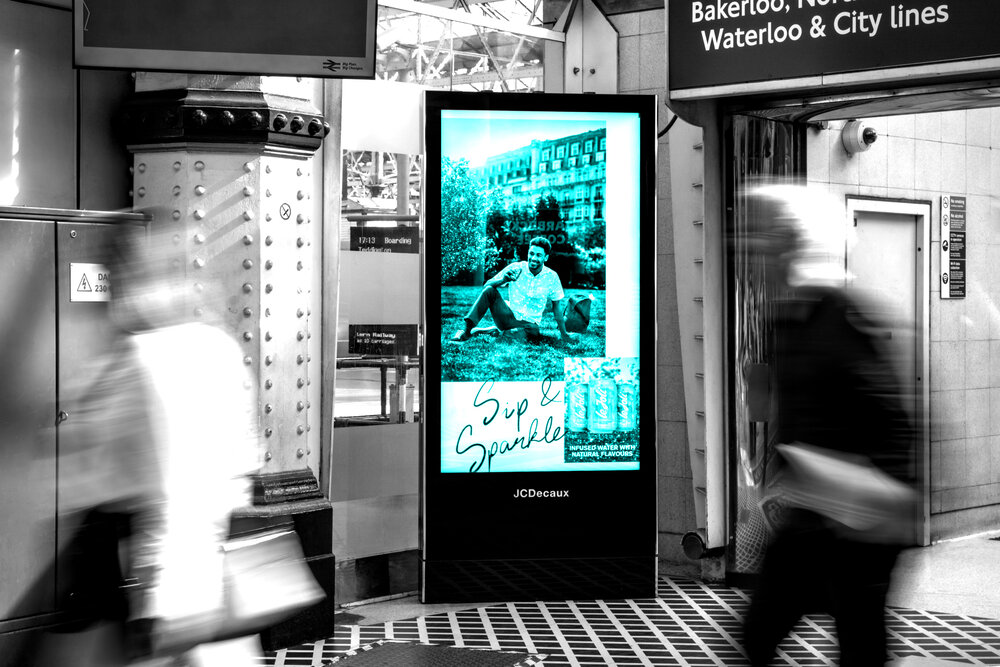
3 minute read | June 4, 2019
Programmatic is a tool, not a channel
Written By: Jean-Christophe Conti
It may not surprise digital marketers to hear that The Trade Desk has further embraced programmatic this quarter. The real news? It was to bring in programmatic for out of home (OOH). And The Trade Desk is not the only Demand Side Platform (DSP) investing in this technology; AppNexus made a similar move earlier this year.
Between them, the biggest and best-known DSPs, they have relationships with all the major holding companies and independent agencies, meaning outdoor programmatic is now going to be a more accessible and addressable medium for advertisers.
Tech is channel agnostic
Any surprise that this is finally happening will perfectly underline how the term ‘programmatic’ has been misused and misunderstood in two ways over the past few years. Not only has it come to be widely known as a synonym purely for digital display, it is still sometimes seen as where the remnants of digital display are bought and sold.
Nothing could be further from the truth. It’s a technology, but it is not a platform and it most certainly is not a channel. It’s the mechanism, not the medium.
For those who have argued this all along and understood that programmatic is as suited to digital outdoor as it is to video, audio, as well as display, there is confirmation now that the big DSPs are onboard. Quite simply, there is momentum building for outdoor programmatic.
Outdoor, accelerated
The big advantage for outdoor programmatic is not purely cost because, contrary to the outdated opinion in some digital circles, this has nothing to do with the remnants of what is available after direct sales have been put up for sale.
Programmatic is all about flexibility and speed to market. Any marketer will know that in any campaign, on any medium, it can take weeks to turn a concept into a live execution. Traditionally, OOH required bookings to be planned weeks, if not months in advance. More recently, OOH could be planned and traded in days. Now, it can be traded in hours.
Today, the prime screens are digital and can be updated in an hour, and yet it has taken the industry a good couple of years to convince media buyers that this medium is truly transforming.
With programmatic, digital outdoor can truly deliver its full potential. Campaigns can be traded via real-time bidding (RTB) on an impression basis and creative can be rolled out to selected sites at the press of a button following a successful bid. It’s a much more efficient way to work and ensures that the right message is being delivered to the right audience at the right time and place. And as a result, increased flexibility and data driven targeting are driving more efficient and cost effective campaigns.
Targeted audiences
Of course, flexible trading models open up a whole new dimension in outdoor. Brands are no longer compelled to remain on a site for pre-determined periods i.e. days, weeks. Instead, they are able to deliver dynamic creative and content by getting really tactical and bidding to achieve a set amount of exposure to different audiences, in various locations at different times of day.
The usual example cited here is a station such as Waterloo. Morning commuters have a different frame of mind going in to work than when they later go home. They are also a completely different market to people who will be there in the day, or entertainment-seekers who are out in the evening and then weekend visitors and tourists. Then by activating live data triggers, brands could give commuters an offer if their train is delayed. Or allow big consumer brands to completely change the product they are advertising dependent on the weather. All without needing to rebook or reschedule campaigns.
This is where utilising data and knowing your audiences enables more granular targeting.
For advertisers it means not only can their budgets can go further, but they can ensure that their digital out of home (OOH) campaigns are truly aligned with other channels whilst being bought through the same buying point. And optimisation is always a good option for better campaign outcomes.
There is however a lot of work to be done in pressing home to advertisers and their agencies the full potential of outdoor programmatic. Research consistently shows that while marketers want to try out new channels and innovative routes to market, few want to be the first ones to do so.
Perhaps, then, one of the biggest promises programmatic can offer advertisers is, unlike digital display, there is no viewability or fraud concerns. Independent software will show a brand how often and for how long their creative ran and, because it’s the only ad running at the time, there’s no potential for the pixel stuffing and frame loading tricks fraudsters employ online.
So, let’s focus on the positives of programmatic and redefine the expectation: flexibility of budget, allocation and execution, efficiencies of technology and application of data, a premium, transparent marketplace, and most of all, making DOOH accessible to digital buyers.
Ultimately, we are seeing a transformation within outdoor through the use of data and programmatic tools. And as a result, advertisers can now see how OOH aligns with other digital channels working in unison, therefore allowing them to join up campaigns throughout the customer journey.
By doing so, they can create memorable experiences for those that matter the most – consumers.
If there is one thing the year will bring us, it will hopefully be a realisation that programmatic is a suite of tools, it is not a channel and it’s just as important to talk about programmatic outdoor as it is other digital medium.
Other posts you might be interested in
View All PostsSign up to receive our newsletter
Stay in the loop and find out what's happening in the world of digital OOH.
